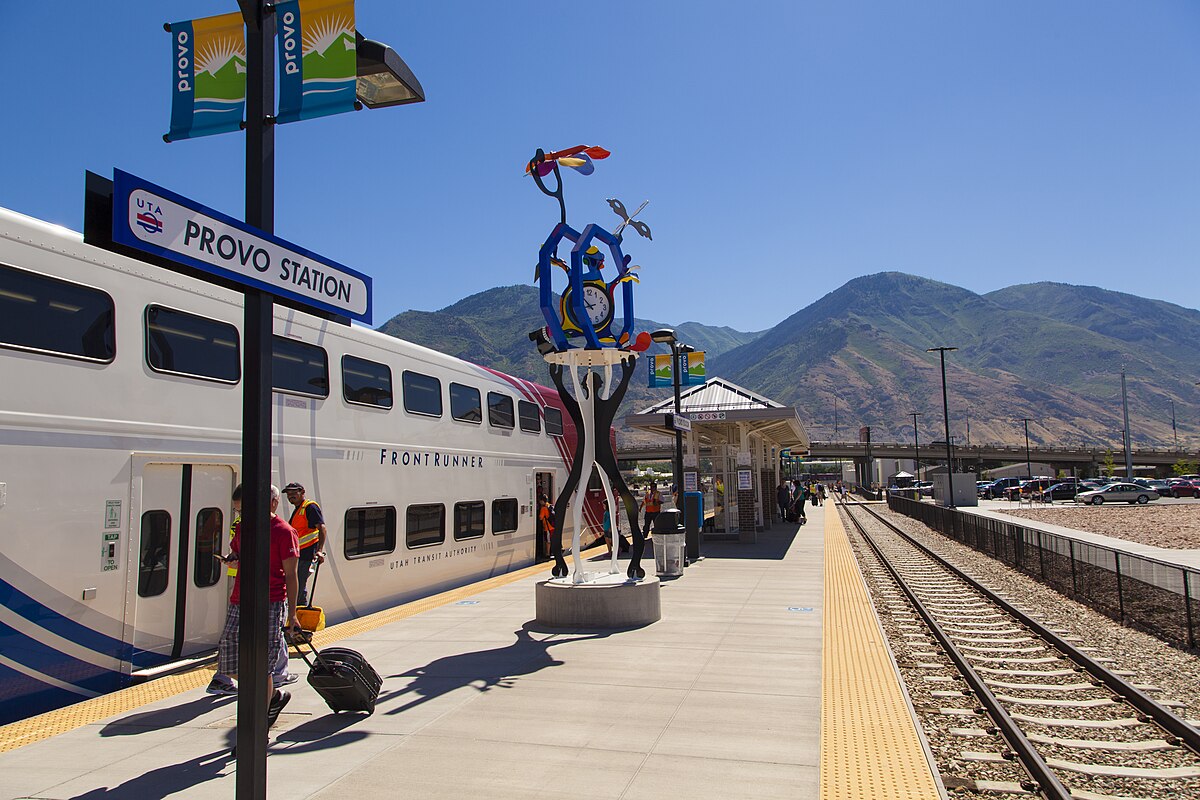To close off this month's discussion of Utah streetcars, trolleys, and mostly interurbans, I've asked my Utah expert this month, Josh B., to write up a guest piece. This is going to be a regular practice considering I have friends with an interest in streetcars all over the United States, and possibly even the world. I'll probably think up a better name than "Guest Piece" though. Without further ado, take it way, Josh!
-----
 |
| Bamberger No. 353, southbound leaving Kaysville (Gordon Cardall) |
 |
| Magna, Utah in 1937, with a Salt Lake & Utah train in the distance. (Don Strack) |
 |
| Salt Lake & Utah steeplecab No. 101 switches freight cars as parlor car 751 passes by on the main. (Gordon Cardall) |
In a previous post, your Motorman highlighted a boxcar that was purchased by the Salt Lake & Utah, but diverted to the Salt Lake Garfield & Western when payment was not forthcoming. This is a single example of the SL&U's extensive freight roster of refrigerator cars, drop bottom gondolas, boxcars, and flatcars. The Utah-Idaho Central boasted a similarly sized selection of freight cars, largely utilized for the sugar beet and fruit traffic originating on its far-flung agricultural branches to Plain City and North Ogden. The Bamberger had a smaller freight roster, but its 50-foot paper service boxcars could be seen as far away as Denver, where they drove the Denver & Rio Grande Western employees mad due to deferred maintenance and constant malfunctions.
 |
| The new Frontrunner heavy-rail commuter service at Provo Station, formerly served by the Bamberger Railroad. (Ricardo63) |
Their position paralleling the D&RGW and the Union Pacific along the Wasatch Front forced the larger steam railroads to offer competitive pricing for local traffic, a pleasant side effect that assisted the economic advancement of the otherwise isolated rural populations. North Ogden residents still fondly remember the “Dummy Line,” the UIC's branch up to the North Ogden Bench, but visit the North Ogden Historical Museum and the narrative focuses on its importance in developing the orchards that thrived at the base of Mount Ben Lomond, not the streetcar services it also provided.
 |
| Ogden City Railway No. 100, year unknown but a perfect example of a steam dummy (Don Strack) |
 |
| A Utah-Idaho Central interurban unloads in the middle of the street at Logan, UT, heading Northbound, 1947. (Gordon Cardall) |
/arc-anglerfish-arc2-prod-sltrib.s3.amazonaws.com/public/PIJMOGPDXNHTHEOQNVLKGGSU6U.jpg) |
| The Salt Lake Tribune) Gov. Gary Herbert speaks as UTA celebrates its 50th birthday with a news conference at the state Capitol in Salt Lake City on Tuesday, March 3, 2020. At left is Carolyn Gonot, executive director of UTA. (Trent Nelson, Utah Tribune) |
This year Utah Transit Authority is celebrating its 50th year; the anniversary stickers adorning all Frontrunner and Trax cars represents that the state is slowly remembering the importance of a publicly accessible passenger rail system. As we acknowledge the interurban renaissance, remember that the interurbans also built the state's industry just as much as its public transport, and look forward to a day when, as urban planners and futurist dreamers predict, an electrified rail network once again stretches from the Idaho border to southern Utah County, and perhaps this time beyond.
 |
| UTA's Trax Light Rail service, continuing the legacy of electric mass transit. (Bond Buyer) |
-----

No comments:
Post a Comment